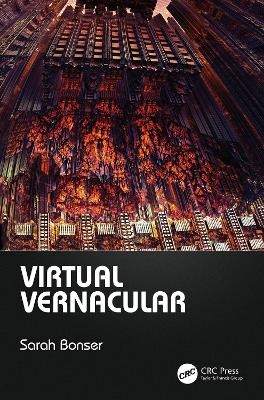
Virtual Vernacular
Seiten
2020
CRC Press (Verlag)
978-0-367-00219-0 (ISBN)
CRC Press (Verlag)
978-0-367-00219-0 (ISBN)
- Titel z.Zt. nicht lieferbar
- Versandkostenfrei
- Auch auf Rechnung
- Artikel merken
This book identifies the ways architecture can be expected to convey to occupants, audience members, and players; Nonverbal ways to bring history and culture into your fictional world. Helping readers find relationships and patterns in visual mediums in an effort to help them build expectations more ways to push design further.
Learn to see the patterns and relationships in visual mediums and buildings as you push the boundaries of design. Sarah Bonser’s Virtual Vernacular breaks the barriers between architectural theory and game design. The text explores the way in which architecture can convey history, culture, and emotion to occupants, audience members, and players. Divided into three sections, the text guides the reader on how to tackle creative problem solving and development strategy.
Key Features:
Architectural theory is hard to navigate, and this approach is an accessible way to start learning it.
Learn more specifically how pop culture parodies these design theories.
Find ways to solve abstract design problems by using the built environment as a case study.
Learn about technical limitations on the built environment that visually impact the look and feel of spaces.
Each piece of architectural theory comes with abstracts and applications, which is a more organized and network-style way to teach an otherwise long-winded subject.
Learn to see the patterns and relationships in visual mediums and buildings as you push the boundaries of design. Sarah Bonser’s Virtual Vernacular breaks the barriers between architectural theory and game design. The text explores the way in which architecture can convey history, culture, and emotion to occupants, audience members, and players. Divided into three sections, the text guides the reader on how to tackle creative problem solving and development strategy.
Key Features:
Architectural theory is hard to navigate, and this approach is an accessible way to start learning it.
Learn more specifically how pop culture parodies these design theories.
Find ways to solve abstract design problems by using the built environment as a case study.
Learn about technical limitations on the built environment that visually impact the look and feel of spaces.
Each piece of architectural theory comes with abstracts and applications, which is a more organized and network-style way to teach an otherwise long-winded subject.
Sarah Bonser is a Seattle-based Architect with a passion for gaming and an interest in technology. Her thesis, while pursuing an M.Arch degree at The Ohio State University, focused on making architectural theory accessible to a general public. She is interested in allowing architects to demonstrate the value of a design through technology.
Acknowledgments. About the Author. Introduction. Part I Concept. 1 Narrative. 2 Canon versus Vernacular. 3 Considering the Built Environment. Part II Massing. 5 Function. 6 Form. 7 Space. Part III Materiality. 8 Dimensions. 9 Materials. Part IV Character. 10 Detailing. 11 Composition. 12 Affectations in Architecture. Index.
| Erscheinungsdatum | 03.03.2020 |
|---|---|
| Zusatzinfo | 67 Illustrations, color; 28 Illustrations, black and white |
| Verlagsort | London |
| Sprache | englisch |
| Maße | 152 x 229 mm |
| Gewicht | 370 g |
| Themenwelt | Kunst / Musik / Theater ► Kunstgeschichte / Kunststile |
| Informatik ► Grafik / Design ► Film- / Video-Bearbeitung | |
| Naturwissenschaften ► Biologie ► Ökologie / Naturschutz | |
| Technik ► Architektur | |
| ISBN-10 | 0-367-00219-1 / 0367002191 |
| ISBN-13 | 978-0-367-00219-0 / 9780367002190 |
| Zustand | Neuware |
| Informationen gemäß Produktsicherheitsverordnung (GPSR) | |
| Haben Sie eine Frage zum Produkt? |
Mehr entdecken
aus dem Bereich
aus dem Bereich


